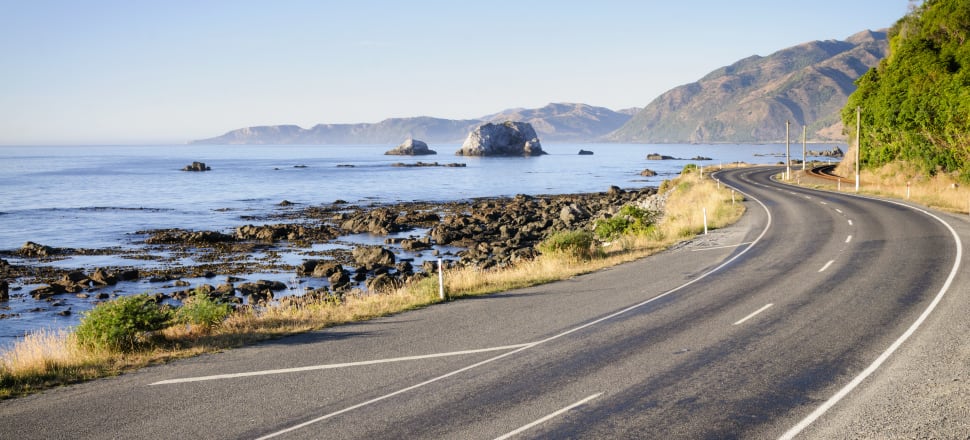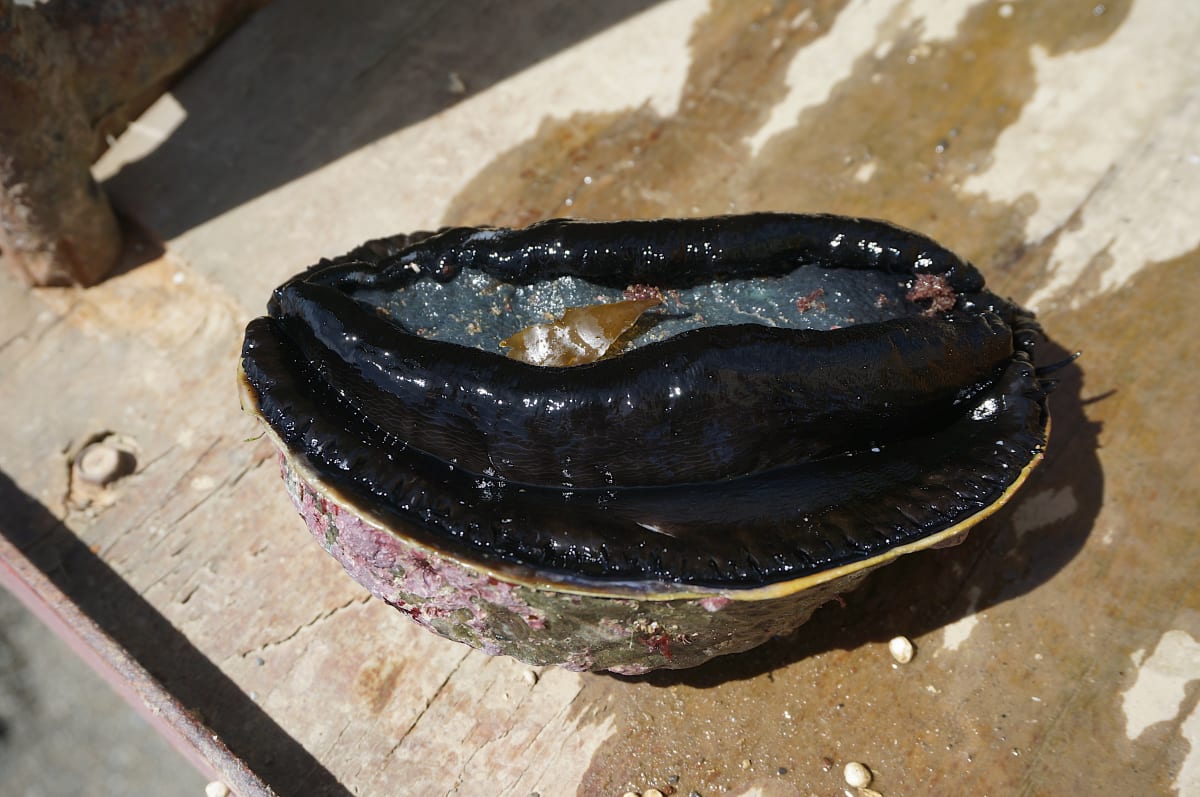
Community and fishing-industry groups are challenging Fisheries New Zealand to say how it will protect Kaikōura pāua beds after wholesale plunder last summer
After enduring the 2016 earthquake, Kaikōura’s pāua fishery has had its second disaster, with an open season that spiralled out of control.
Seafood New Zealand says a survey carried out last summer shows recreational fishers took 35 tonne of pāua from Kaikōura waters in the first open season since the quake.
Kaikōura people had “sweated blood” for five years to reseed pāua beds ruined when the quake pushed the sea floor up by 2m, says Jeremy Helson, chief executive of the industry body.
But the hordes of people who descended on Kaikōura for the three-month season took seven times the five-tonne catch approved by the Minister of Oceans and Fisheries, Helson says.
And fisheries officers seemed powerless to stop the plunder.
“The people who nursed this fishery back to health have good reason to be livid about this,” Helson says.
“By ignoring recommendations that would have guaranteed restraint on this fishery, the regulators did little more than ring the dinner bell.”
Strong measures missing
When government agency Fisheries New Zealand proposed a temporary recreational season, the statutory advisory group Kaikōura Marine Guardians, along with commercial fishers, asked for strong measures to safeguard the recovering beds, Helson says.
But when the short season opened last December, pāua lovers in their hundreds descended daily on Kaikōura from as far away as Christchurch and Nelson to pluck the shellfish from shallow coastal waters.
Guardians’ chairman Larnce Wichman says Fisheries New Zealand ignored every recommendation the group and the industry made, apart from the season length.
“This was a virgin biomass - they were big pāua after five years, and we asked for a minimum size of 130mm. The minister set it at 125mm - that’s a year’s growth for pāua.
“We wanted a limit of three pāua per person and a limit of 12 per vehicle. Fisheries New Zealand made it five per person and no limit per vehicle.”
On some days a thousand people were picking pāua along the Kaikōura coastline, Wichman says.
“They were coming from Blenheim and Nelson - up to 10 people in a van. There were vehicles driving up and down the coast looking for a park.”
No stopping them
The season was being closely monitored by a survey company and it was known that the five-tonne take approved by minister David Parker had been exceeded within the first week, Wichman says.
“It was gumboot fishery - no skill required. You could just walk along and pick the shellfish up off the seabed.”
The veteran lobster fisher says no legal mechanism was available to close the recreational season early.
“As commercial fishers, if we hit our TAC [total allowable catch], that’s it - you have to stop fishing. But with the recreational fishery there’s no way to do that,” says Wichman.
Fisheries New Zealand denies the need for an early closure.
“The opening was always planned to be temporary for the purposes of helping us to understand how the fishery would respond to fishing pressure,” says Emma Taylor, the director of fisheries management at the Ministry for Primary Industries, which Fisheries New Zealand comes under.
The Guardians have a different perspective.
“They’ve basically taken seven years of recreational allowance from that pāua fishery in just three months. All the pāua within a couple of metres of shore up and down the Kaikōura coast have just been stripped,” says Wichman.
The 35-tonne take was calculated from a bed survey carried out before the season.
But Seafood New Zealand says the true amount could be even higher because some areas were left out of the count.
“Even if we use the 35-tonne figure, the amount of pāua taken between December 1, 2021, and February 28, 2022, by recreational fishers exceeded the total allowable catch for customary, amateur and commercial fishers combined.”
Fisheries New Zealand says the five-tonne allowance was intended as an indicator, rather than a hard limit.
“It was set using uncertain information taken from boat-ramp surveys and based on historic catch information from before the closure,” Taylor says.
“It’s important to note that no rules have been broken.”
Pāua Industry Council chair Storm Stanley says the consequences of that might take years to become apparent.
“It could have a serious impact on recruitment - taking such large numbers from the shallows. That’s where the larvae settle and grow because that’s where the food is and it’s a relatively small area.”
If Fisheries New Zealand had been aware of how much pāua was being taken, it should have been possible to invoke the same emergency legislation that closed the fishery after the quake, Stanley says.
“It clearly did not anticipate what would happen. But our concerns now are for the future.
“We’re very interested in how Fisheries New Zealand will manage season two, and we would urge it to listen to the community, to the rūnaka and to the guardians about how to protect that fishery.”
Good amid the bad
Wichman concedes fisheries compliance officers did a good job of monitoring last summer’s pāua frenzy - handing out plastic tools to measure the shellfish and safely detach them.
If a pāua foot is cut by a knife, then has to be thrown back as undersize, it will bleed and die, Wichman says.

But Fisheries New Zealand rejected pleas from the industry and the guardians to recommend the harvesting tool and make catch-reporting compulsory.
There was one upside to the season for the town, if not for the pāua, Wichman says.
“Kaikōura food outlets and businesses did well from the out-of-town trade, and they’ve been through some tough years, so that was good. But the impact on the fishery was just terrible.”
Fisheries New Zealand says it will take into account last summer’s survey results and current shellfish numbers when it decides on what a future pāua season might look like.
And the public will again be consulted, says MPI's Taylor.
“We will work with iwi, industry and the Kaikōura Marine Guardians as a part of the process. We appreciate that people are passionate about this fishery and its recovery.”
The good news is that the five-year closure was effective in rebuilding the fishery, creating an abundance of pāua that are more accessible than they were before the earthquake, Taylor says.
But Wichman says with the year half gone and full population survey results not yet available, there’s little time left to put in place catch rules or legislative changes to give Fisheries New Zealand more effective ways of managing the season.
“What we do know is we can’t allow a repeat of what happened last summer.”
Helson agrees.
“The guardians predicted this. The commercial industry predicted this. With no other restraints, a short season just incentivised a free-for-all.
“We can only hope that when the discussion comes around again, the people who fought for this fishery, who know this fishery, will be listened to.”
*Made with the support of the Public Interest Journalism Fund*








